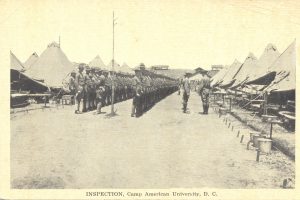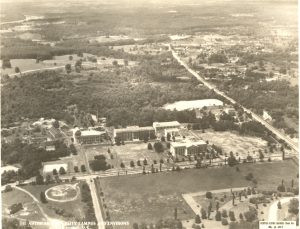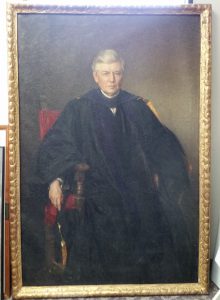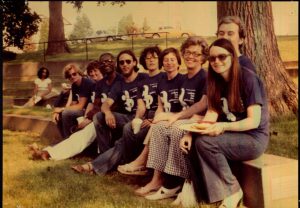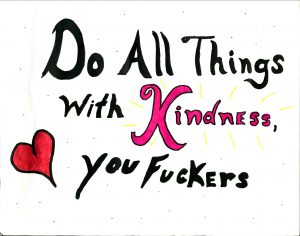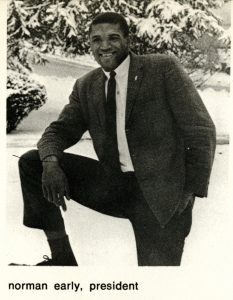In remembrance of last year’s historic women’s march and the pussy hat, we decided to explore protest costumes. Protesters express themselves through the messages on their signs as well as their clothing. In looking through the images taken by Eagle photographers and Patrick Frazier, we discovered one recurring theme – animal costumes and masks. We selected three images that display the creativity of protesters.
The numerous anti-war protests held in Washington, D.C. in the 1960s and 1970s offer a window into protest attire. Though the theme of the protests were similar, the signs and costumes were not. Some costumes were simple a mask while others were more elaborate. In some instances, the sign was an integral part of the costume. It provided the storyline.
The Patrick Frazier Collection includes images from both of the Nixon counter-inaugural protests. The first in 1969 was the largest anti-war protest in United States history. It included a parade with street theater and marching kazoo bands. In this image, the people behind the protester in the guerrilla mask are playing kazoos.

Participants in the counter-inaugural march during Nixon’s first inauguration in January 1969
The second in 1973 centered on the capitol grounds. In this image, the costumed protester’s sign underscores the concerns of the marchers.
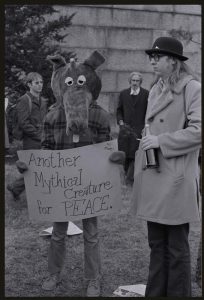
Participants in the counter-inaugural demonstrations during Nixon’s second inauguration on January 20, 1973
When the AU Chapter of the Young Americans for Freedom invited Secretary of the Interior James Watt to speak at AU on February 10, 1983, 150 protesters from the AU chapter of Americans for Democratic Action and the College Democrats chanted, “Watt must go” and sang, “This Land is My Land” outside the ticketed event. In this image, AU Student Jessica Cohen is wearing a rabbit costume and holding a bunch of carrots. Her sign had a personal message for Secretary Watt.
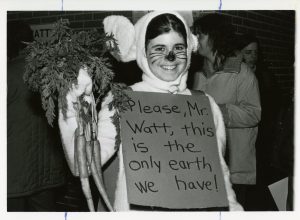
Jessica Cohen protesting at Secretary Watt’s speech at American University on February 10, 1983

